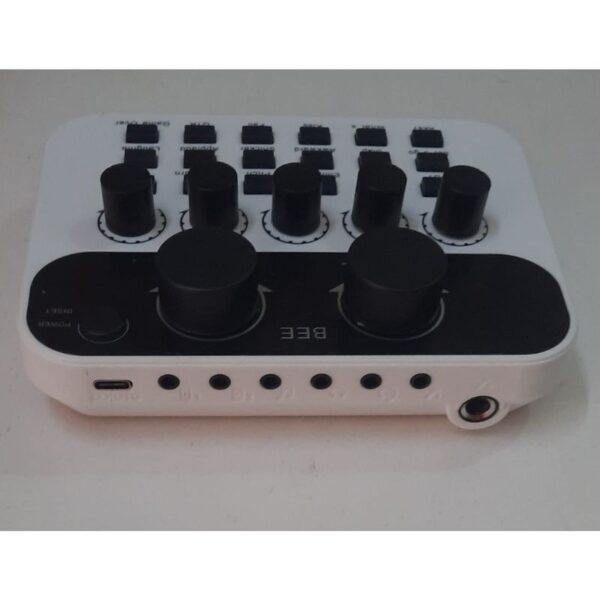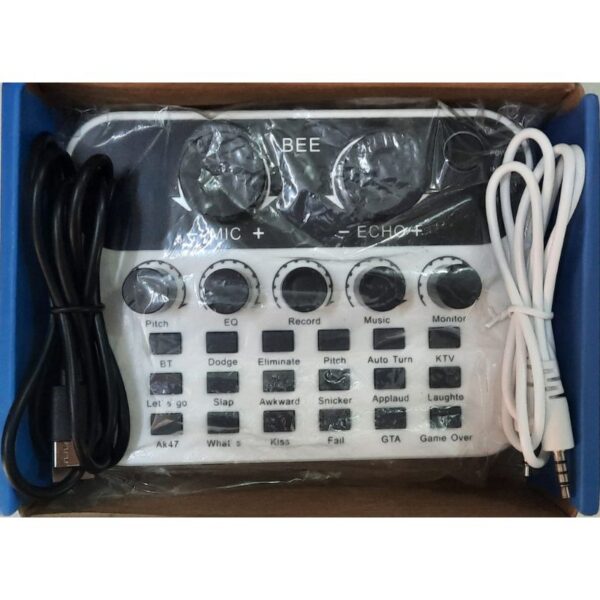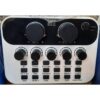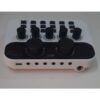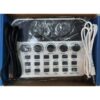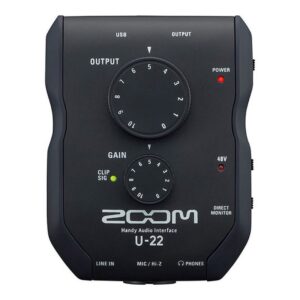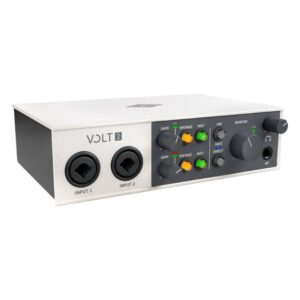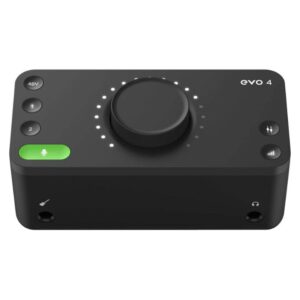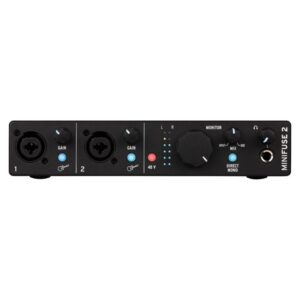Description
The term “Bee Live sound card” refers to a category of portable external sound cards or audio interfaces that are specifically designed for mobile live broadcasting, online karaoke, streaming, and content creation using smartphones, tablets, and computers.
These devices are typically compact, often battery-powered, and feature a range of inputs and outputs, along with built-in effects and vocal processing capabilities. They are often branded with names like “Little Bee,” “Bee,” or simply found as generic “Live Sound Card” products from various manufacturers, usually originating from China.
Key Features and What to Expect from a “Bee Live Sound Card”:
- Portability: Designed to be small, lightweight, and often battery-powered for on-the-go use with mobile devices.
- Multiple Inputs:
- Microphone inputs (usually 3.5mm or sometimes XLR/TRS combo jacks for higher-end models, but often 3.5mm).
- Instrument inputs (e.g., for guitar/keyboard, often 3.5mm).
- Auxiliary inputs (3.5mm) for background music from another phone or device.
- Multiple Outputs:
- Headphone outputs for monitoring (3.5mm).
- Live streaming outputs (3.5mm) for connecting to one or more mobile phones for broadcasting.
- Speaker/monitor outputs (3.5mm or sometimes RCA).
- Built-in DSP Effects: This is a major selling point. They typically include:
- Reverb/Echo: For vocal effects.
- Voice Changers: Various modes like male-to-female, female-to-male, child voice, monster voice, etc.
- Sound Effects (SFX): Pre-loaded sound bites like applause, laughter, gunshot, air horn, “cheers,” etc., triggered by dedicated buttons.
- Electric Sound/Autotune: Basic pitch correction effects.
- Real-Time Monitoring: Allows you to hear your voice and the music mix directly through headphones with minimal latency.
- Background Music Control: Often features a “Denoise” or “Voice Elimination” (karaoke mode) button to suppress vocals from background music, letting your voice stand out.
- Bluetooth Connectivity (Common in newer models): Allows for wireless streaming of background music from a smartphone or tablet.
- Direct Monitoring: Lets you hear your input directly without routing through software, minimizing delay.
- Compatibility: Designed to work with various platforms:
- Smartphones (Android, iOS) via 3.5mm TRRS cables or USB-C adapters.
- Computers (Windows, Mac) via USB.
- Gaming consoles (PS4, Xbox, Switch) sometimes.
Who is it for?
- Live Streamers: Especially those using mobile phones for platforms like TikTok, YouTube Live, Facebook Live, Bigo Live, etc.
- Online Karaoke Enthusiasts: People who sing karaoke online or want to practice with vocal effects.
- Podcasters/Content Creators: For simple setups where vocal effects, sound effects, and background music integration are desired.
- Casual Gamers: For basic voice chat and some fun voice effects.
Limitations to be aware of:
- Professional Audio Quality: While they offer various effects, the audio quality (preamps, converters) is generally entry-level and not comparable to professional studio audio interfaces like Focusrite Scarlett or Universal Audio Volt. They are designed for convenience and features, not pristine recording quality.
- Noise Floor: Some cheaper models might have a noticeable noise floor (hiss) in the audio.
- Durability: Build quality can vary.
- Driver Support: May not have dedicated drivers or advanced software control like higher-end interfaces.
- No Phantom Power (generally): Most “Bee Live” sound cards do not provide 48V phantom power, meaning you’ll need a dynamic microphone or a condenser microphone with its own power supply.
- Limited Customization: Pre-set effects are generally not highly customizable.


